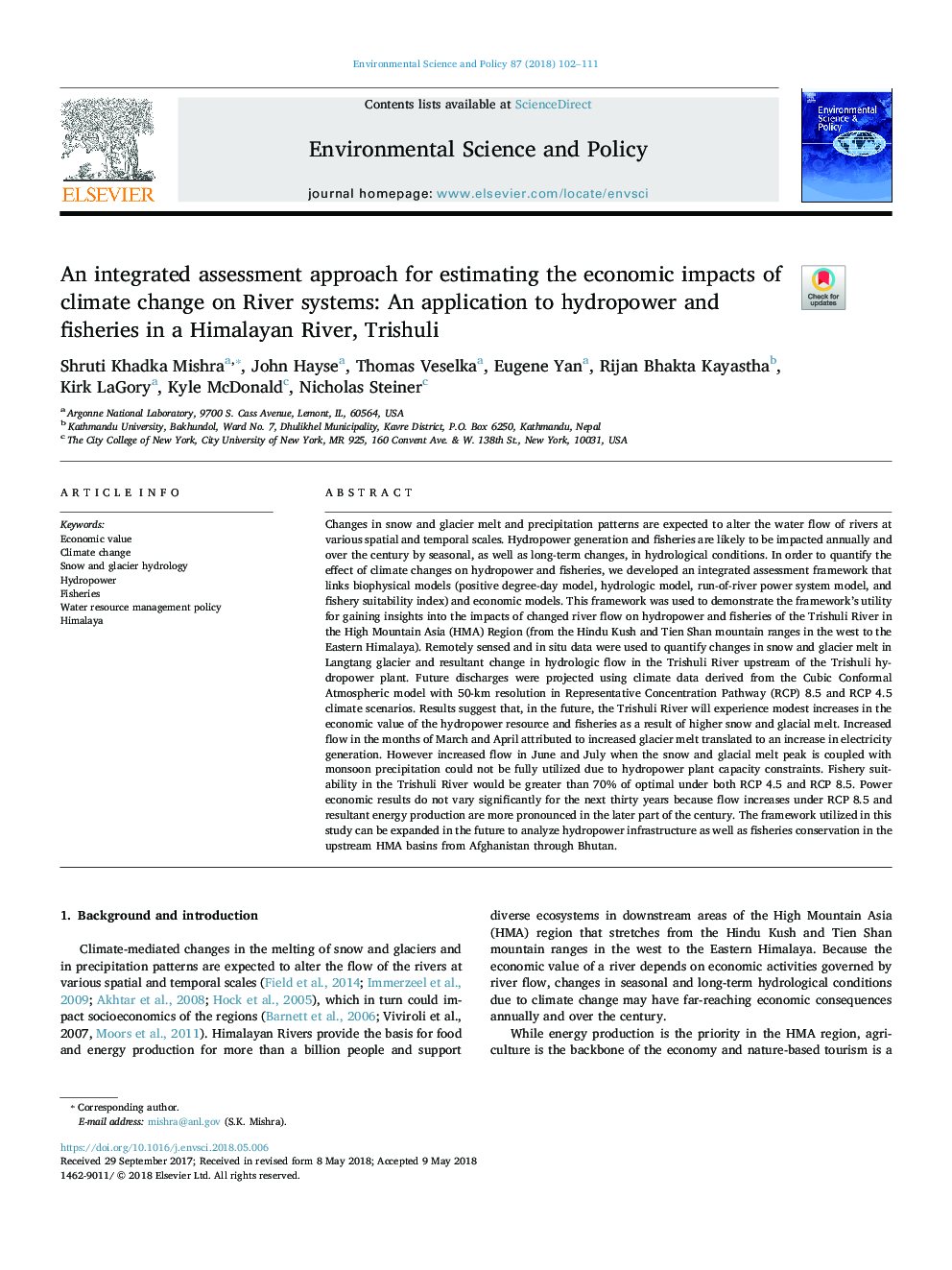| کد مقاله | کد نشریه | سال انتشار | مقاله انگلیسی | نسخه تمام متن |
|---|---|---|---|---|
| 7465818 | 1485021 | 2018 | 10 صفحه PDF | دانلود رایگان |
عنوان انگلیسی مقاله ISI
An integrated assessment approach for estimating the economic impacts of climate change on River systems: An application to hydropower and fisheries in a Himalayan River, Trishuli
دانلود مقاله + سفارش ترجمه
دانلود مقاله ISI انگلیسی
رایگان برای ایرانیان
کلمات کلیدی
موضوعات مرتبط
مهندسی و علوم پایه
مهندسی انرژی
انرژی های تجدید پذیر، توسعه پایدار و محیط زیست
پیش نمایش صفحه اول مقاله

چکیده انگلیسی
Changes in snow and glacier melt and precipitation patterns are expected to alter the water flow of rivers at various spatial and temporal scales. Hydropower generation and fisheries are likely to be impacted annually and over the century by seasonal, as well as long-term changes, in hydrological conditions. In order to quantify the effect of climate changes on hydropower and fisheries, we developed an integrated assessment framework that links biophysical models (positive degree-day model, hydrologic model, run-of-river power system model, and fishery suitability index) and economic models. This framework was used to demonstrate the framework's utility for gaining insights into the impacts of changed river flow on hydropower and fisheries of the Trishuli River in the High Mountain Asia (HMA) Region (from the Hindu Kush and Tien Shan mountain ranges in the west to the Eastern Himalaya). Remotely sensed and in situ data were used to quantify changes in snow and glacier melt in Langtang glacier and resultant change in hydrologic flow in the Trishuli River upstream of the Trishuli hydropower plant. Future discharges were projected using climate data derived from the Cubic Conformal Atmospheric model with 50-km resolution in Representative Concentration Pathway (RCP) 8.5 and RCP 4.5 climate scenarios. Results suggest that, in the future, the Trishuli River will experience modest increases in the economic value of the hydropower resource and fisheries as a result of higher snow and glacial melt. Increased flow in the months of March and April attributed to increased glacier melt translated to an increase in electricity generation. However increased flow in June and July when the snow and glacial melt peak is coupled with monsoon precipitation could not be fully utilized due to hydropower plant capacity constraints. Fishery suitability in the Trishuli River would be greater than 70% of optimal under both RCP 4.5 and RCP 8.5. Power economic results do not vary significantly for the next thirty years because flow increases under RCP 8.5 and resultant energy production are more pronounced in the later part of the century. The framework utilized in this study can be expanded in the future to analyze hydropower infrastructure as well as fisheries conservation in the upstream HMA basins from Afghanistan through Bhutan.
ناشر
Database: Elsevier - ScienceDirect (ساینس دایرکت)
Journal: Environmental Science & Policy - Volume 87, September 2018, Pages 102-111
Journal: Environmental Science & Policy - Volume 87, September 2018, Pages 102-111
نویسندگان
Shruti Khadka Mishra, John Hayse, Thomas Veselka, Eugene Yan, Rijan Bhakta Kayastha, Kirk LaGory, Kyle McDonald, Nicholas Steiner,